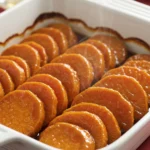Follow Me On Social Media!
lemon pound cake recipe
Imagine a cake so moist and buttery that it practically melts on your tongue, with bright citrus notes dancing across your palate and a tender crumb that’s pure perfection. That’s exactly what you’ll get with this lemon pound cake recipe – and trust me, I’m Bella, and I’ve tested more pound cake variations than I care to admit!
After years of tweaking, testing, and tasting (the hardest part of my job, really), I’ve finally perfected what I consider the ultimate lemon pound cake. What makes this recipe so special? It delivers an intense lemon flavor without being overly tart, creates that coveted tender crumb we all crave, and uses foolproof techniques that work every single time.
Whether you’re a beginner baker or someone who’s been whipping up cakes for decades, this best lemon pound cake recipe will become your go-to. It’s reliable, absolutely delicious, and surprisingly simple once you understand the key techniques I’ll share with you.
The Anatomy of a Perfect Lemon Pound Cake: Understanding the Ingredients
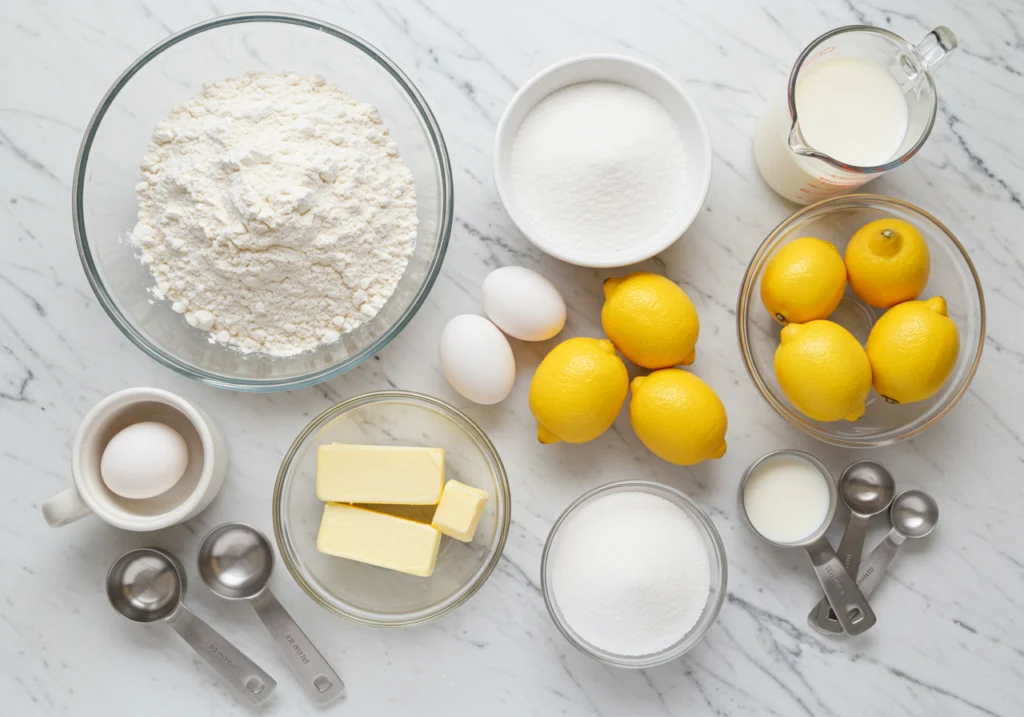
Before we dive into mixing bowls and measuring cups, let’s talk about why each ingredient in this easy lemon pound cake recipe plays a crucial role. Understanding your ingredients isn’t just chef-y knowledge – it’s the secret to consistent baking success.
All-Purpose Flour vs. Cake Flour I use all-purpose flour in this recipe because it provides just the right amount of structure. Cake flour would make our pound cake too delicate, while bread flour would make it tough. All-purpose gives us that perfect balance of tender yet sturdy.
Unsalted Butter at Room Temperature

This is non-negotiable, folks. Room temperature butter (it should give slightly when pressed) is essential for proper creaming. Cold butter won’t incorporate air properly, and melted butter will give you a dense, heavy cake. Set your butter out 2-3 hours before baking.
Granulated Sugar Sugar isn’t just for sweetness – it helps create that tender crumb by interfering with gluten development. It also helps our butter cream properly, creating tiny air pockets that make the cake light.
Fresh Eggs at Room Temperature Cold eggs can cause your beautifully creamed butter to seize up. Room temperature eggs incorporate smoothly, creating a silky batter. If you forget to take them out early, place them in warm water for 10 minutes.
Fresh Lemons for Zest and Juice
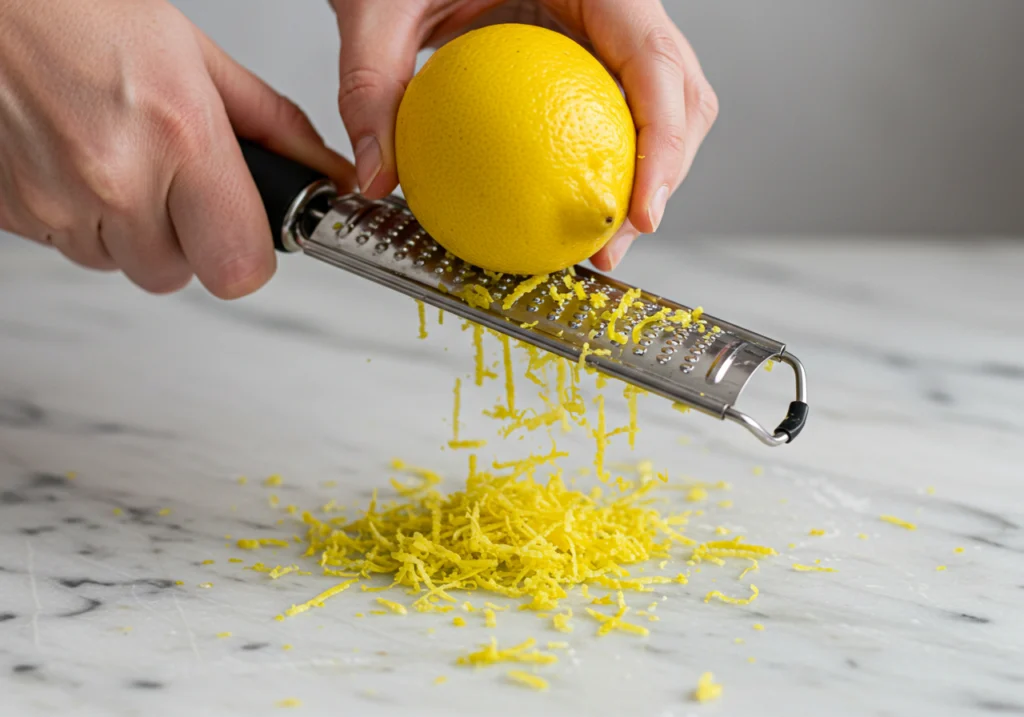
Please, please don’t use bottled lemon juice. Fresh lemons provide both the aromatic oils in the zest and the bright acidity in the juice. You’ll need about 3-4 large lemons for this recipe.
Buttermilk: The Moisture Secret Buttermilk is my secret weapon for incredibly moist pound cake. Its acidity tenderizes the gluten and adds a subtle tang that complements the lemon beautifully. No buttermilk? Mix 1 cup whole milk with 1 tablespoon white vinegar – let it sit 5 minutes until it curdles slightly.
Step-by-Step Instructions with Photos
Let me walk you through this process step by step. Don’t worry – I’ll explain the why behind each technique so you’ll understand what’s happening.
Step 1: Preparation is Everything
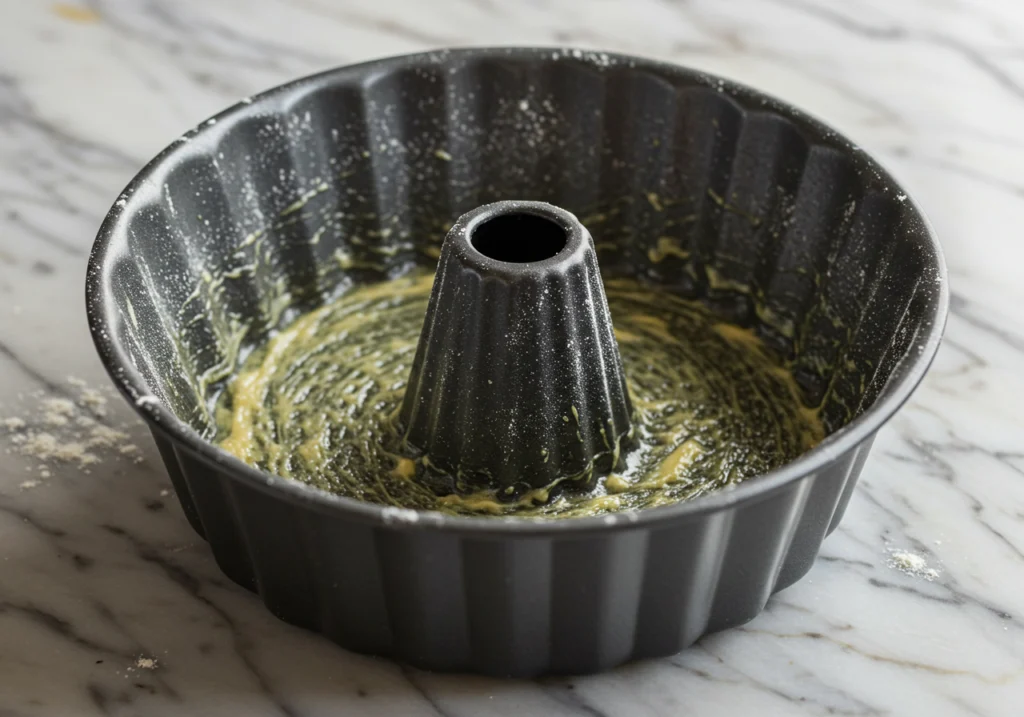
Preheat your oven to 325°F (yes, lower than you might expect – pound cakes need gentle heat). Grease a 10-inch bundt pan or two 8×4-inch loaf pans with butter, then dust with flour. This double protection prevents sticking.
Step 2: Combine Your Dry Ingredients In a medium bowl, whisk together 3 cups all-purpose flour, 1 teaspoon baking powder, and 1/2 teaspoon salt. Whisking distributes everything evenly and eliminates lumps.
Step 3: The Creaming Method Magic
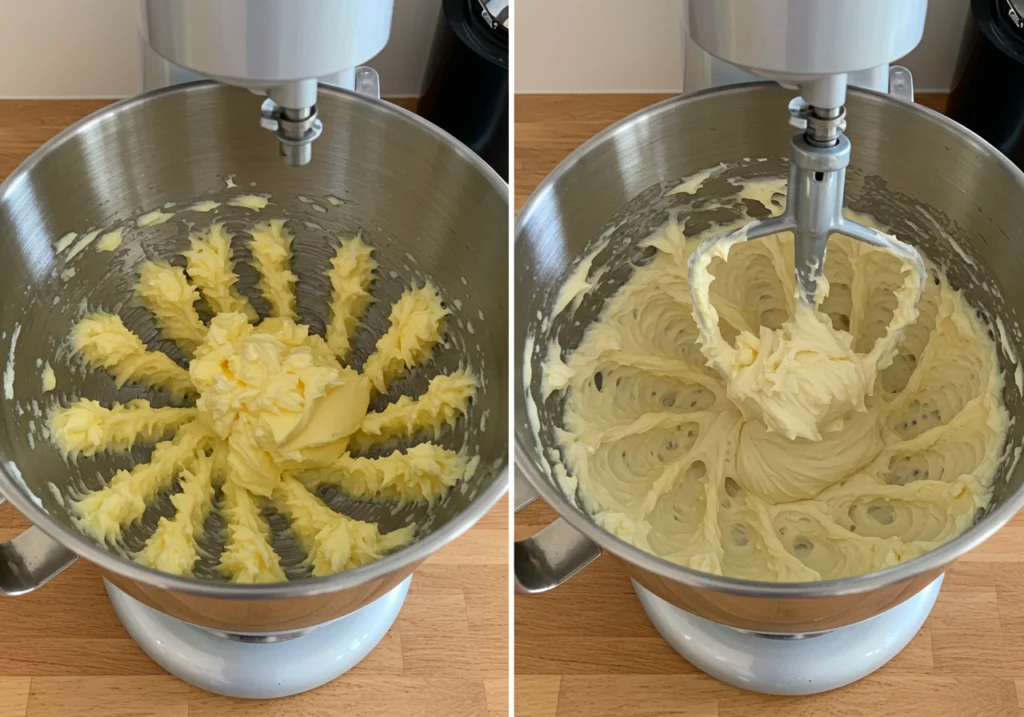
In your stand mixer bowl, cream 1 cup room temperature butter with 2 cups sugar for 4-5 minutes until light and fluffy. This isn’t just mixing – you’re incorporating air that will make your cake tender. The mixture should look pale and increased in volume.
Step 4: Incorporating Eggs One at a Time
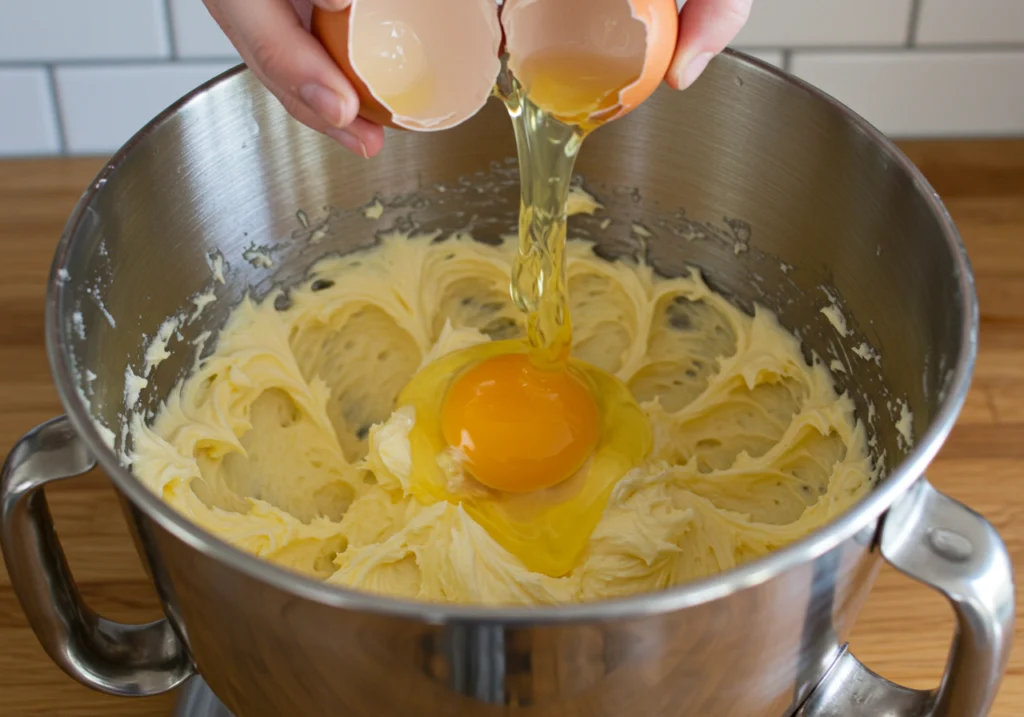
Add 4 large eggs one at a time, mixing well after each addition. This gradual addition prevents the batter from breaking. Each egg should be fully incorporated before adding the next.
Step 5: The Alternating Method
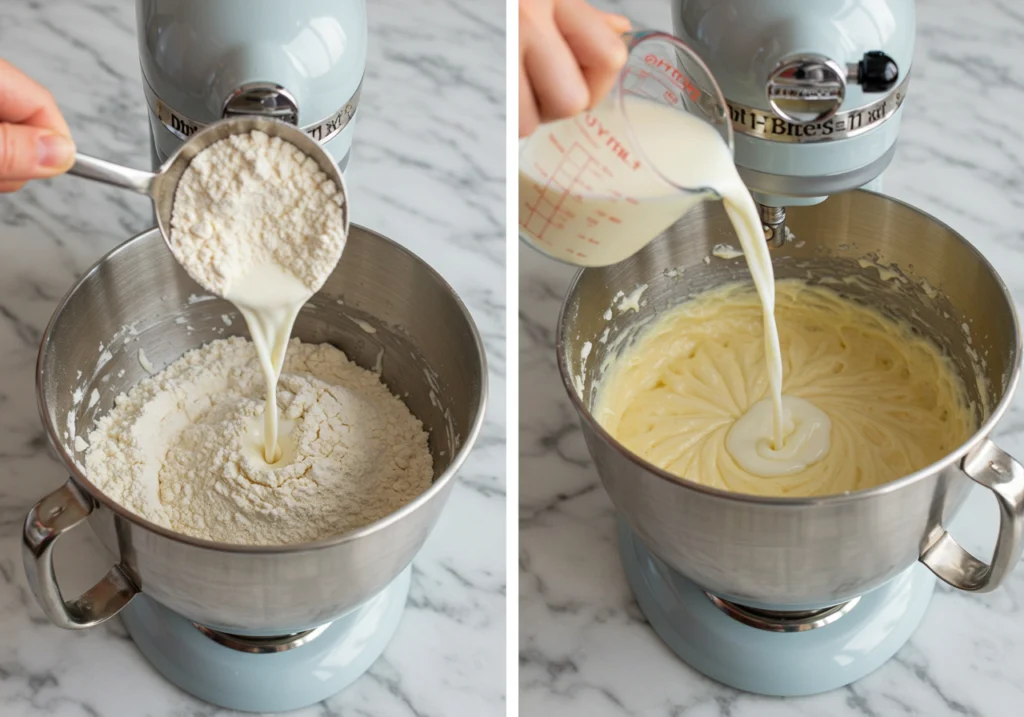
Here’s where technique really matters. Add your flour mixture in three additions, alternating with buttermilk in two additions. Start and end with flour. Mix just until combined – overmixing develops gluten, making your cake tough.
Step 6: The Lemon Magic
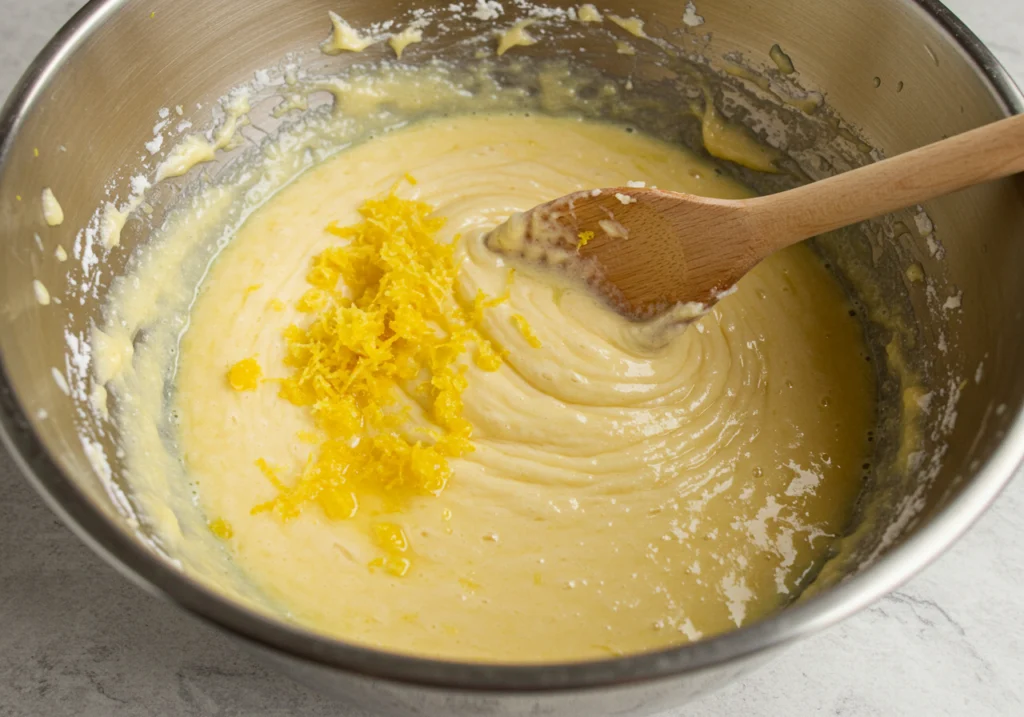
Fold in the zest of 3 lemons and 1/4 cup fresh lemon juice. The zest provides intense lemon flavor, while the juice adds brightness and helps tenderize the cake.
Step 7: Baking to Perfection
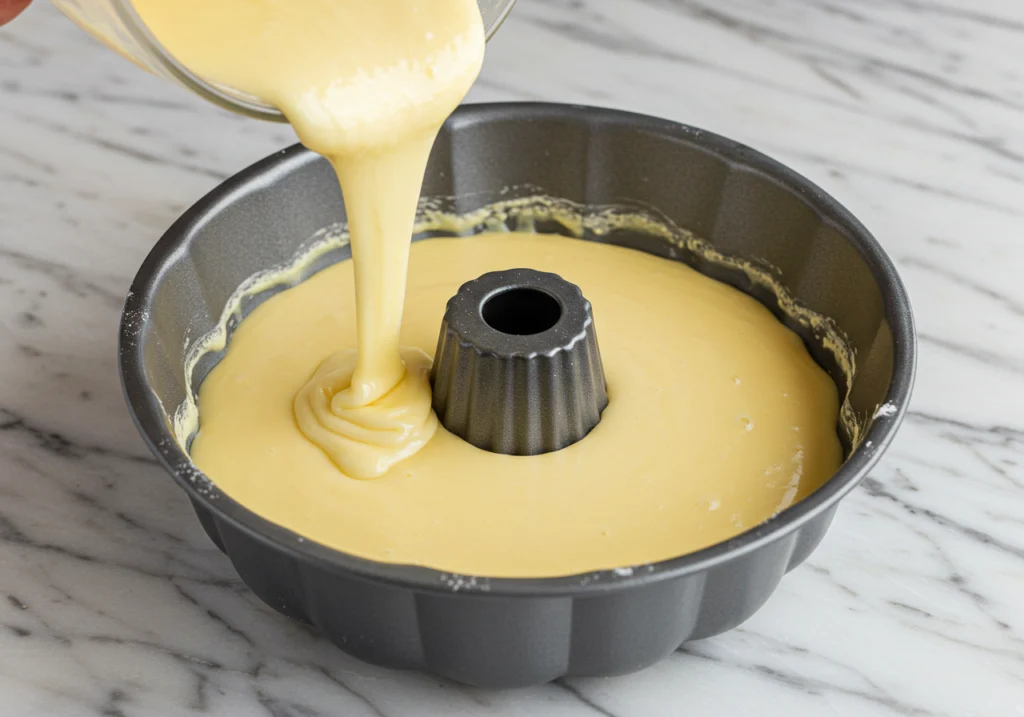
Pour batter into your prepared pan and bake for 60-75 minutes (50-60 for loaf pans). The cake is done when a toothpick inserted in the center comes out with just a few moist crumbs.

The Two-Part Lemon Glaze for Maximum Flavor
This is where good becomes absolutely incredible. The two-part glaze system ensures maximum lemon flavor in every bite.
Lemon Syrup Soak
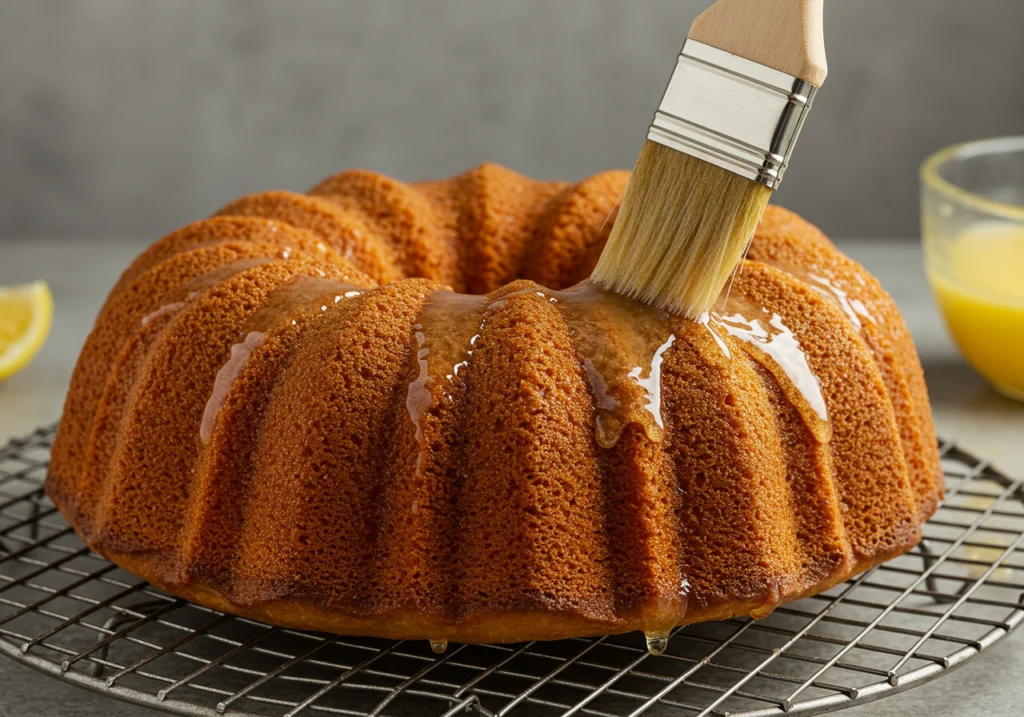
While your cake is still warm, brush it with a simple syrup made from 1/3 cup sugar, 1/3 cup fresh lemon juice, and 2 tablespoons water. This soaks into the cake, adding moisture and intense lemon flavor throughout.
Tangy Lemon Icing

Once cooled, drizzle with a thicker glaze made from powdered sugar, lemon juice, and a touch of zest. This creates a beautiful presentation and adds that final burst of citrus.
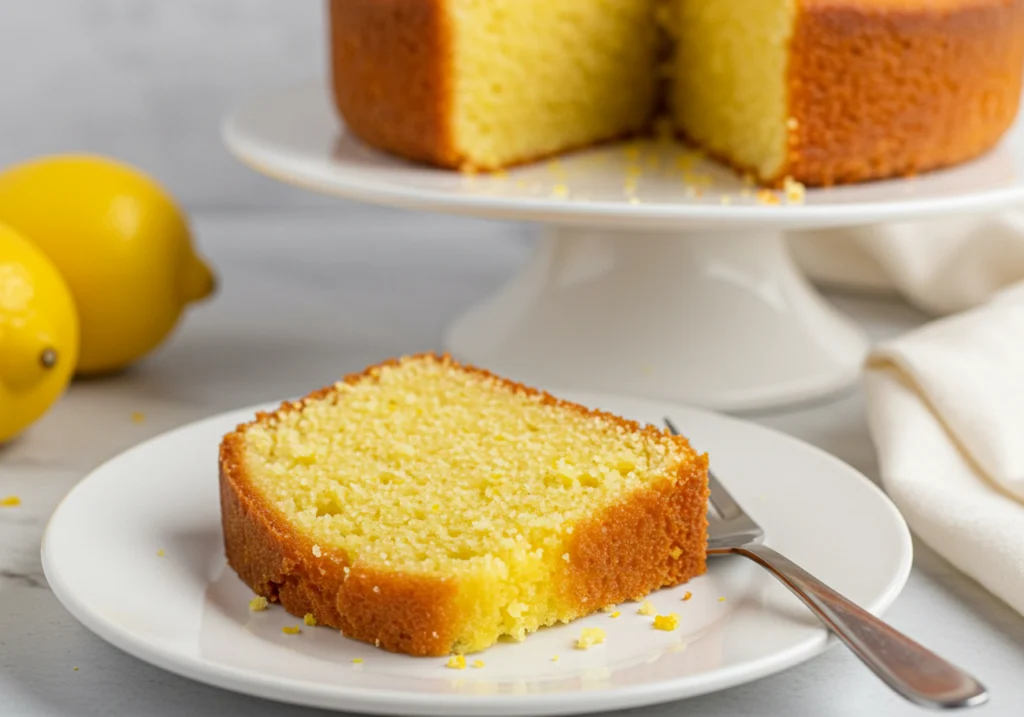
Pro-Tips from the Test Kitchen
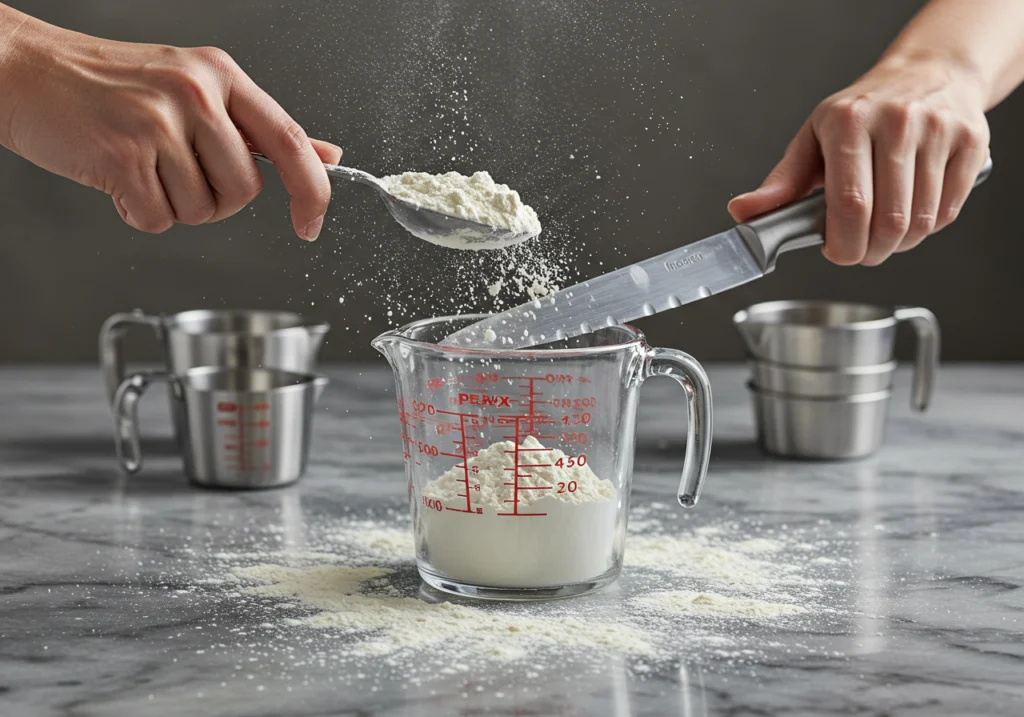
After making this cake countless times, here are my hard-won secrets:
Measure Flour Correctly Spoon flour into your measuring cup and level with a knife. Scooping directly can pack in 30% more flour, making your cake dry and dense.
Don’t Overmix Once you add flour, mix just until you can’t see dry flour. Overmixing develops gluten, creating a tough, dense cake.
Pan Preparation is Crucial Even non-stick pans need proper greasing and flouring. Pound cake batter is rich and can stick easily.
Patience with Cooling Let the cake cool in the pan for 15 minutes before turning out. This prevents breaking while ensuring it doesn’t stick.
Fun Variations to Try
Once you’ve mastered this base recipe, try these delicious variations:
Lemon Blueberry Pound Cake
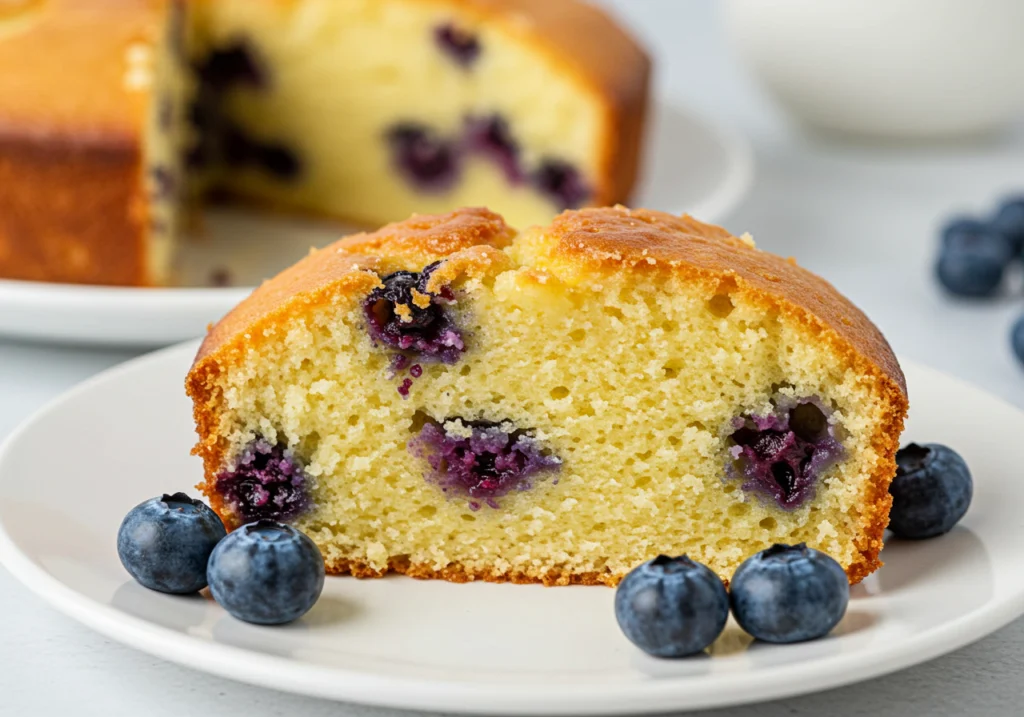
Toss 1 cup fresh blueberries in 2 tablespoons flour before folding into batter. This prevents sinking.
Lemon Poppy Seed Pound Cake Add 2 tablespoons poppy seeds with the flour for that classic combination.
Cream Cheese Lemon Pound Cake Replace 4 oz of butter with room temperature cream cheese for an even richer, denser cake.
Troubleshooting Common Pound Cake Problems
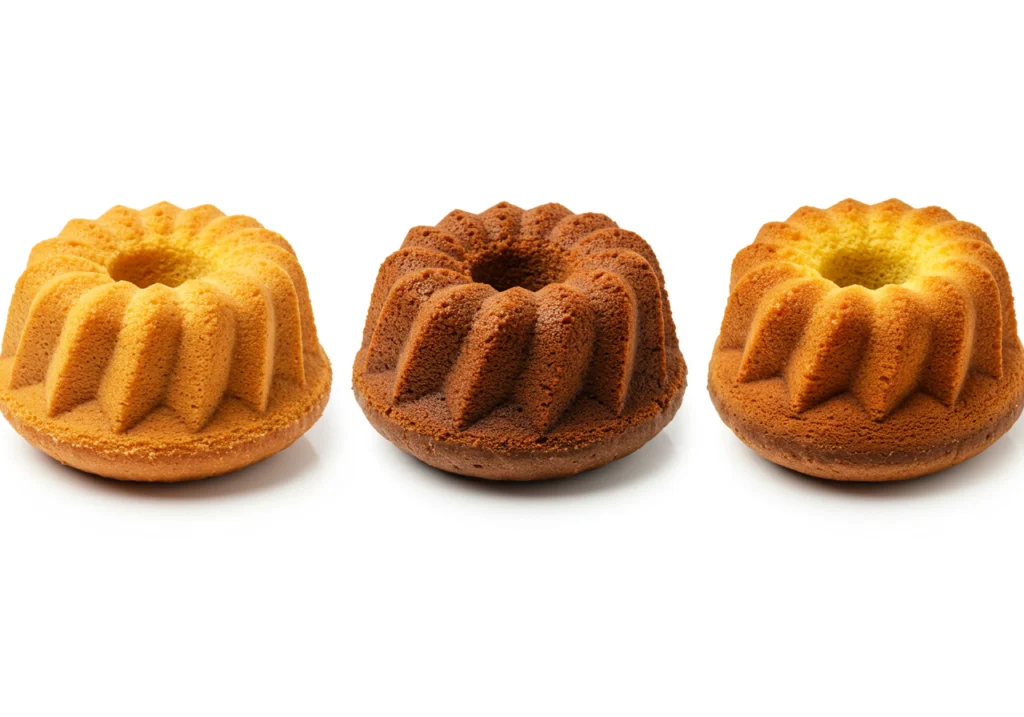
Why is my cake dry? Usually overbaking or incorrect flour measurement. Check your oven temperature with a thermometer and measure flour properly.
Why did my cake sink? Underbaking or opening the oven door too early. Don’t peek until at least 50 minutes of baking time.
Why is my cake dense? Cold ingredients or overmixing are the usual culprits. Make sure everything is at room temperature and mix gently once flour is added.
Frequently Asked Questions (FAQ)
Can I use a different type of pan? Yes! This recipe works in bundt pans, loaf pans, or even a tube pan. Adjust baking times accordingly.
Can I make this recipe ahead of time? Absolutely. The cake actually improves after a day as the flavors meld. Store covered at room temperature.
How do I store lemon pound cake?
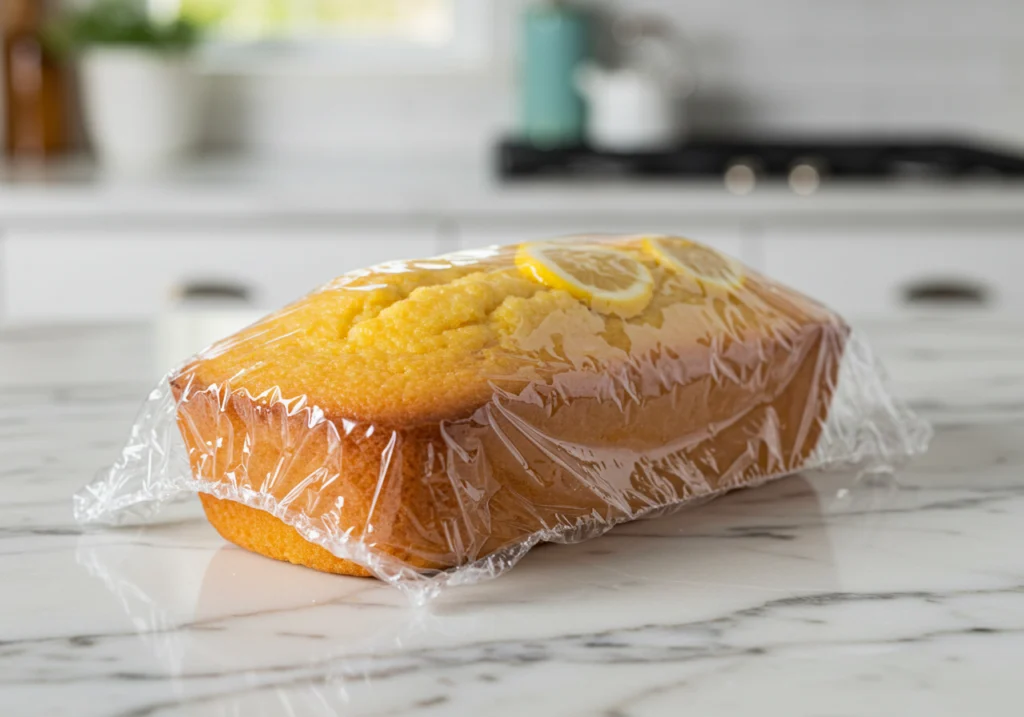
Wrap tightly in plastic wrap and store at room temperature for up to 5 days.
Can I freeze this cake? Yes! Wrap well and freeze for up to 3 months. Thaw overnight at room temperature.
Print
Why This is the Last Lemon Pound Cake Recipe You’ll Ever Need
- Total Time: 1 hour 35 minutes
- Yield: 12 servings 1x
- Diet: Vegetarian
Description
Moist, buttery, and bursting with fresh lemon flavor, this lemon pound cake is the ultimate treat. With a tender crumb, double glaze (lemon syrup + icing), and foolproof technique, it’s the last pound cake recipe you’ll ever need.
Ingredients
Cake:
-
3 cups all-purpose flour
-
1 teaspoon baking powder
-
1/2 teaspoon salt
-
1 cup unsalted butter, room temperature
-
2 cups granulated sugar
-
4 large eggs, room temperature
-
1 cup buttermilk
-
Zest of 3 lemons
-
1/4 cup fresh lemon juice
Lemon Syrup:
-
1/3 cup sugar
-
1/3 cup fresh lemon juice
-
2 tablespoons water
Lemon Glaze:
-
1 1/2 cups powdered sugar
-
3–4 tablespoons fresh lemon juice
-
1 teaspoon lemon zest
Instructions
-
Preheat oven to 325°F (163°C). Grease and flour a 10-inch bundt pan.
-
In a bowl, whisk together flour, baking powder, and salt.
-
Cream butter and sugar in a stand mixer for 4–5 minutes until pale and fluffy.
-
Add eggs one at a time, mixing well after each addition.
-
Add flour mixture in three additions, alternating with buttermilk in two additions (begin and end with flour). Mix just until combined.
-
Fold in lemon zest and lemon juice.
-
Pour batter into prepared pan. Bake 60–75 minutes, until golden and a toothpick inserted comes out with just a few moist crumbs.
-
While warm, brush cake with lemon syrup. Let cool completely.
-
Drizzle with lemon glaze before serving.
Notes
-
All ingredients should be at room temperature.
-
Don’t overmix after adding flour to avoid a dense cake.
-
Let cake cool in pan for 15 minutes before turning out.
-
Cake tastes even better the next day as flavors meld.
-
Store wrapped at room temperature for up to 5 days, or freeze up to 3 months.
- Prep Time: 20 minutes
- Cook Time: 60–75 minutes
- Category: Dessert
- Method: Baking
- Cuisine: American, Classic
Nutrition
- Serving Size: 1 slice
- Calories: 370 kcal
- Sugar: 35 g
- Sodium: 150 mg
- Fat: 15 g
- Saturated Fat: 9 g
- Unsaturated Fat: 5 g
- Trans Fat: 0 g
- Carbohydrates: 54 g
- Fiber: 1 g
- Protein: 5 g
- Cholesterol: 90 mg
Keywords: lemon pound cake, moist lemon cake, bundt cake recipe, lemon dessert, easy pound cake, glazed lemon cake
This lemon pound cake recipe has never failed me, and I’m confident it won’t fail you either. The combination of proper technique and quality ingredients creates a cake that’s absolutely irresistible. Happy baking!

